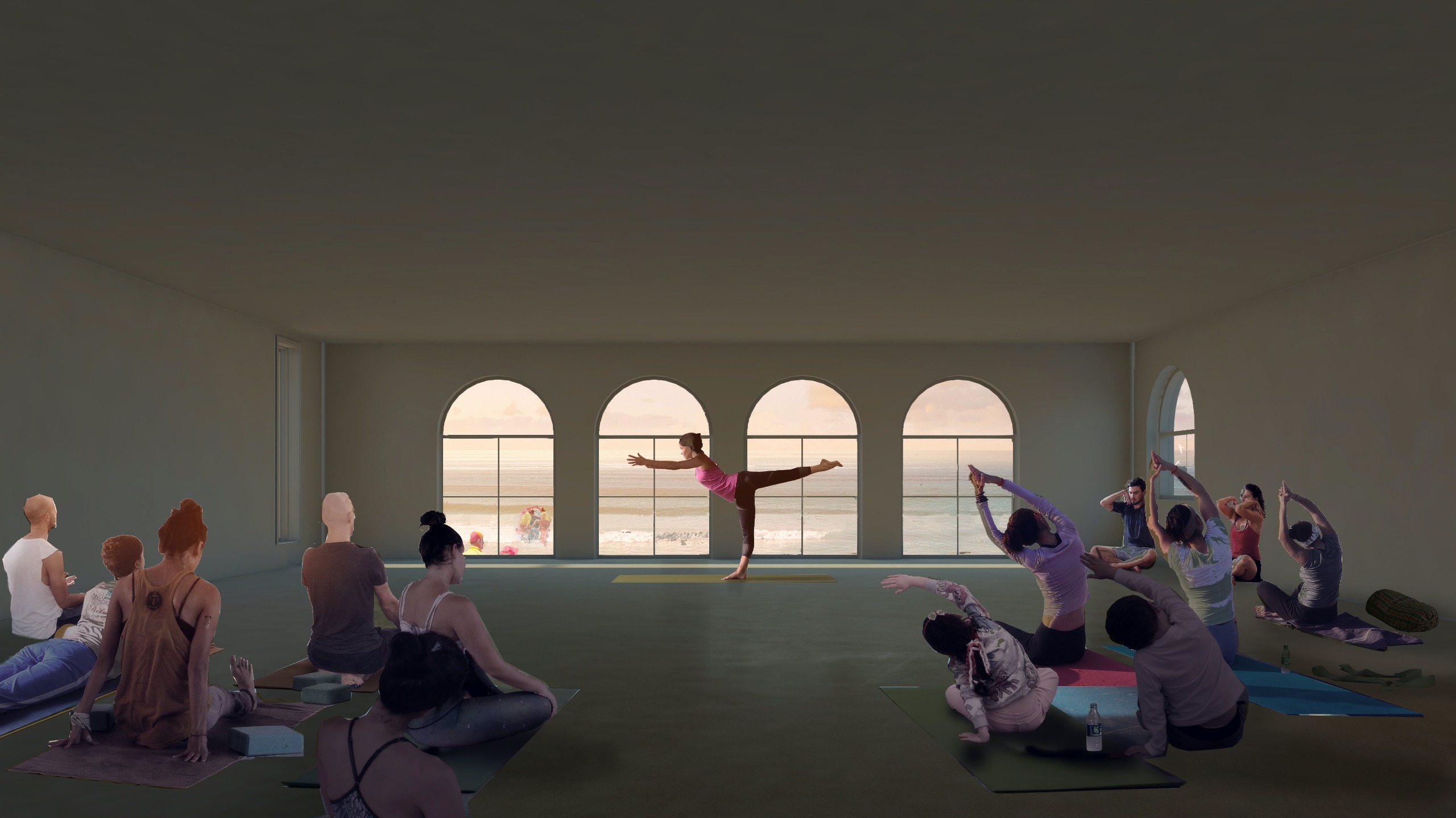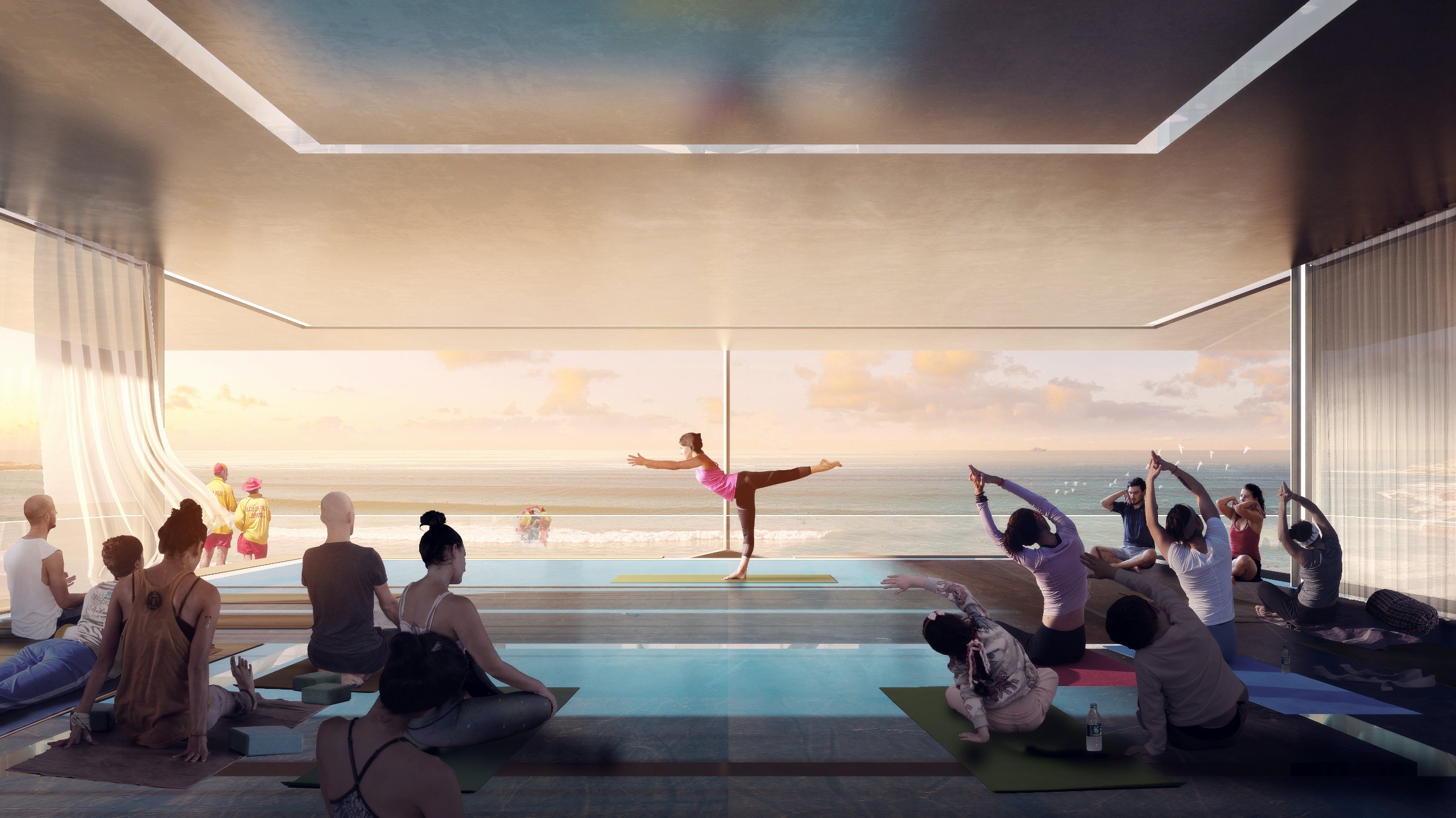Consultation closed.
Waverley Council, in partnership with Bondi Surf Bathers Life Saving Club (Bondi Surf Club), is embarking on a historic heritage conservation and upgrade of the world’s oldest surf lifesaving club.
Project updates
Background
This draft concept design has been guided by a detailed Conservation Management Plan (CMP) for the site and building, in close collaboration with the NSW Office of Environment and Heritage, which has formally supported the design.
There are limitations with the current building making it increasingly difficult to fulfil the Club’s growing water safety and rescue obligations. Bondi is Australia’s busiest beach, and the club conducts hundreds of rescues and first aids each year.
The project will address the many functional deficiencies of the current building and aims to:
- provide equality of facilities for females, who now comprise 40% of new membership
- increase space for training and educational programs
- storage for the increasing amount of essential modern-day lifesaving equipment
- provide improved and safer facilities for Nippers
- address workplace health & safety and building code non-compliance issues, poor disabled access, adherence to fire standards, flood damage and general disrepair.
Education Room |
First Aid Room |
Inflatable rescue boat storage |
Surfcraft storage |
Female — Equality of facilities |
Male — Equality of facilities |
Nippers marshalling |
Poor access |
The Surf Club Building

Bondi Surf Bathers Life Saving Clubhouse, 1934
The clubhouse was built in 1934 and is recognised for its exceptional cultural and heritage significance.
It is an exquisitely beautiful building, designed by architects Ross + Rowe, renowned for another heritage treasure — the celebrated Commonwealth Bank building in Martin Place.
Removing mock-heritage items
In keeping with the requirements of the CMP, the proposed concept plans include the removal of the various mock-heritage additions that have been identified as being ‘intrusive’ and detracting from the building’s historic value.
The proposal preserves and restores the original clubhouse, with lightweight modern additions that highlight the building’s heritage.
Proposed concept design
 |  |
The design provides a new green public space between the pavilion and clubhouse, improving views and public access to and from the beach.
A publicly accessible open courtyard is created by removing the works yard currently located at the rear of the club.
 Publicly accessible courtyard Publicly accessible courtyard |
The design respects the unique identity of Bondi, adding to a tradition of buildings like Bondi Pavilion and Bondi Beach Public School, both of which have courtyards, creating a space protected from southerly winds and providing shelter.
While upgrading the original clubhouse, its main hall is envisaged to become a publicly accessible surf museum honouring the birthplace of the world’s surf lifesaving tradition.
|
|
| Existing | Proposed |
|
|
| Existing Main Hall | Proposed publicly accessible surf museum |
The design, with its surrounding public space, courtyard, open terraces and kiosk, will provide for greater public interaction with the club and allow it to expand its community programs.
Footprint
Existing footprint | Proposed footprint |
The footprint of the overall clubhouse remains the same. The proposal will increase useable public parkland, is of reduced bulk and scale, and retains all existing views.
Community consultation was open between August and September 2020. The consultation report outlines the feedback gathered during this period.
Concept design - consultation
CLOSED: This survey has concluded.





















